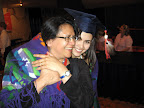Earlier this week I was in downtown Chicago, just walking, with dear friend Jean Mendoza. We walked past the American Girls store and decided to stop in and see the Kaya doll. Neither of us had been there prior to this.
Our first stop was the displays there on the ground floor. All kinds of products. Puzzle books, paper dolls, non-fiction, fiction... as many of you know, American Girl is a huge business success.
I learned that Kirsten has a "secret Sioux friend, Singing Bird." I never paid much attention to all the books, but probably ought to look into the ways that American Indians are presented in the historical dolls stories. Kirsten's stories are set in 1854 in Minnesota. My quick look into the Lakota history (in Duane Champagne's
Native America: Portrait of the Peoples) says "By the early 1800s, many Sioux bands moved onto the Plains from their original woodland homes in Minnesota..." (p. 163). It was primarily Ojibwe's (Chippewa's) in Minnesota in the 1800s and now.
This is only a quick look into dates/tribes of Minnesota during the time of Kirsten. More extensive research could (and should) be done. Any teachers out there willing to take a class through such a study?
The historical dolls are displayed in the basement floor, so we went there next. First diorama to our right were things of Kaya's tribe (Nez Perce). Nearby was a diorama of Josefina. I noted the presentation of the horno (outdoor oven). There was a (fake) fire inside, and a loaf of bread on a paddle placed as though it had just come out of the oven. Thing is, when you actually cook bread in these ovens (we Pueblo Indians use them, too; our Tewa word for oven is panteh--can't put the correct mark over the a in this blogger software), the fire is completely extinguished and ashes cleaned out before the bread is placed in the oven. It would be better if American Girl removed the fake fire from the oven.
In the center of that floor section was a table on which Kaya and a tipi (spelled tepee) were displayed. She's almost as tall as her tipi, which is an error in scale. Same with her pony. The small scale of the tipi reminds me of the ways that igloos are typically shown in children's books. In truth, they were and are rather large. Again and again, however, they're shown to be about the size of a doghouse. That's a tangent, though. Back to American Girls.
Further along the way was a theater where stage shows (musicals) are presented several times a day. There were large posters of some child actors and scenes from the historical dolls. I didn't see one of Kaya. I asked a salesperson in that section about the shows. He said they do a musical that includes all the historical dolls as characters. He handed me a brochure. I studied it and said "I don't see a girl who is dressed as Kaya." He pointed to one and said "That's her. She does more than one character." He also talked about their other shows, with "bitty characters" and described, with great enthusiasm, the products for toddlers, how they're child-safe, and how they are designed to introduce children to American Girl. (This is when I really started feeling grossed out by the place.)
We went into the larger room with displays of the dolls and their things. In that area there were 15 foot-long (or thereabouts) displays for all dolls, except for Kaya. I asked the sales clerk (and there are many, all through the store) where the Kaya display was. She said it was around the corner, over in the other room. I asked why it wasn't with the others in the big room. She said they didn't have enough space, and decided to put her out there, because she didn't have as many accessories as the other dolls.
I replied that it was pretty typical, actually, to marginalize Native Americans, put them elsewhere, not in the mix, as it were.
She went on to say that they were trying to be authentic. According to her (or her script), American Girl has decided that, to be authentic, Kaya has to have little in the way of accessories. Clothes, furniture, etc.
Hmmm... I thought to myself. I guess all the other girls, according to this salesperson, had more in the way of material goods. The pioneer girl, the immigrant, etc. etc., they all had plenty of goods. How accurate is that?
The salesperson then said that Kaya would be in with the rest of the girls when they move to their larger building.
By then I was utterly disgusted with the entire place. I thanked the salesperson, and we left. I wasn't confrontational.
I should remind readers that, while I did ask questions that may have suggested I felt that Kaya ought to be in the big room with the other girls, that exclusion/inclusion/marginalization is just one slice of this discussion. Several weeks ago, I posted a review (
read it here) that points to the multiple errors and flaws in the Kaya books. American Girl could do better, and you, as a consumer, can find much better books about American Indians for the children you work with, or parent, or teach....
(Note to Jean: If you want to add anything, please do!)
And, those of you who have more knowledge of the American Girl books, please comment, share what you know about the ways that American Indian characters are presented in the stories.
Note at 9:01 PM---Roger Sutton noted my post here over at
Read Roger. Follow comments there, which are about the commercialization aspects of AG.
.

